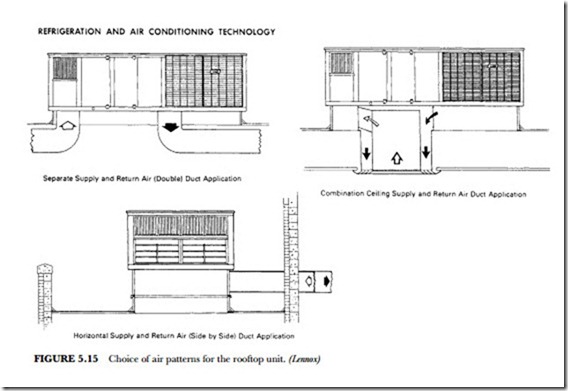ACOUSTICAL TREATMENT
Insulating the supply duct reduces duct loss or gain and prevents condensation. Use 1 1/2-pound density on ducts that deliver air velocities up to 1500 fpm.
Three-pound density or neoprene-coated insulation is recommended for ducts that handle air at veloci- ties greater than 1,500 fpm. Insulation can be 1/2 or 1 inch thick on the inside of the duct.
When rooftop equipment uses the sandwich space for the return air system, a return air chamber should be connected to the air-inlet opening. Such an air chamber is shown in Figure 5.14. This reduces air- handling sound transmission through the thin ceiling panels. It should be sized not to exceed 1,500-fpm return-air velocity. The duct can be fiberglass or a fiberglass-lined metal. A ceiling return-air grille should not be installed within 15 feet of the duct inlet.
VOLUME DAMPERS
Volume dampers are important to a good system design. Lengths of supply runs vary and usually have the same cubic-foot measurements. Therefore, balancing dampers should be used in each supply branch run. The installer must furnish and install the balancing dampers. Dampers should be installed between the sup- ply air duct and the diffuser outlet.
There are several ways in which rooftop conditioners can be installed. Figure 5.15 shows three installation methods.
